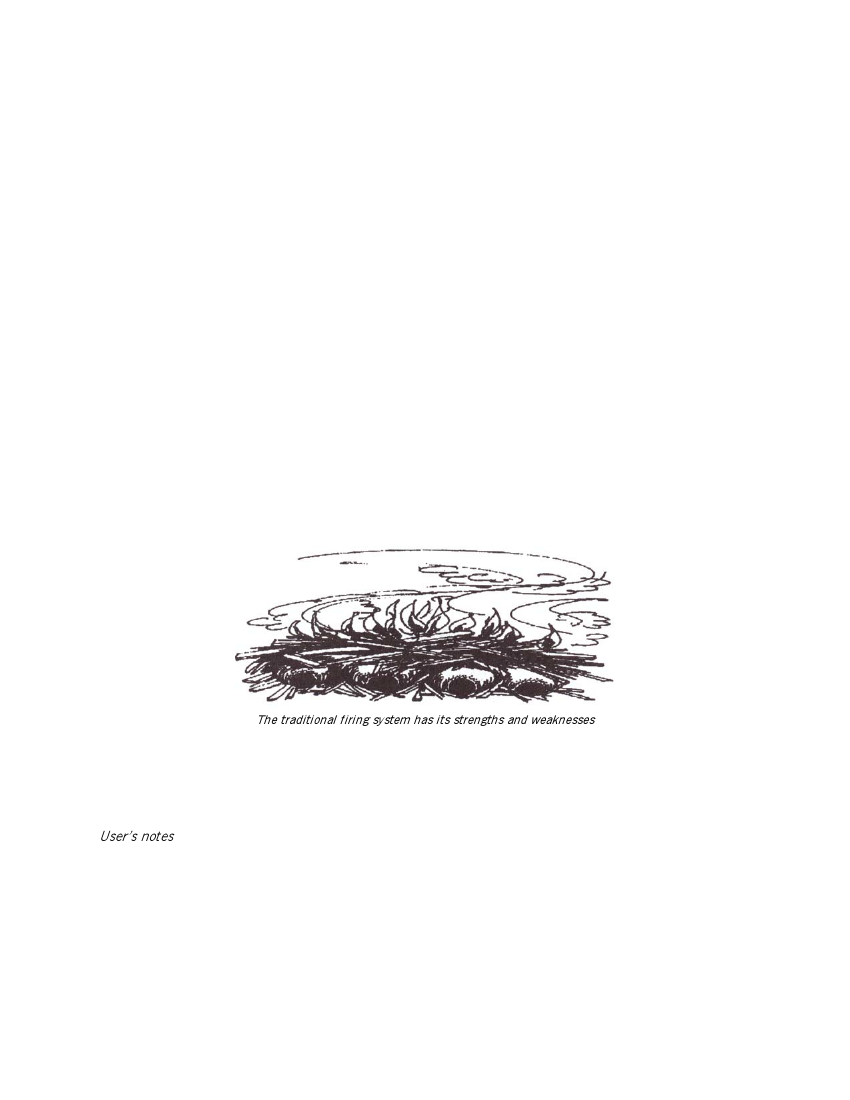
Topic 2.4: Kiln construction and use: An example
Objectives
• To examine the strengths and weaknesses of the existing bonfires/firing systems
• To identify alternative simple and affordable methods of firing pottery products with reference to
the “Better Bonfire” kiln
• To learn how to construct and use the “Better Bonfire” kiln.
Materials and equipment
Fire clay building bricks, polythene sheet, stones, murram (clay gravel/latrine mix), sand, anthill soil,
building earth, water, reinforcing rod, tie or binding wore, (optional: chicken wore), rammer, pick, tape
measure, builder’s line, mason’s hammer, spade or hoe, wheelbarrow, plumb line, spirit level and mason’s
trowel. For firing: A pre-prepared kiln, ready to fire stoves, firewood, dried grass or straw, ash and cow
dung.
Time: Five hours
Content and procedure
• Discuss the strengths and weaknesses of the existing traditional firing systems
• Discuss the qualities and necessary requirements for firing ceramic products and identify labour
and investment requirements
• Identify and discuss material requirements for the construction of the “Better Bonfire” kiln
• Introduce skills on how to construct and use the “Better Bonfire” kiln. Plan with the participants
an easy way of following up skills training. Plan a separate 5 days training in kiln construction and
use.
The traditional firing system has its strengths and weaknesses
Practical Activity
Five days. This could be done at a later date.
• Constructing the “Better Bonfire” kiln
• Firing stoves using the “Better Bonfire” kiln.
User’s notes
Many traditional potters still fire their pots in an open bonfire, or a bonfire in a traditional pit. Although this
method is cheap and simple, it does not work well in wet or damp conditions. It also uses a lot of fuel wood
and dried grass. There are designs of kilns that are more efficient, but also expensive, difficult to build, use
or even maintain. Others are designed to use other fuels such as gas, oil or electricity.
Rapid and uneven heating and cooling processes (as in the case of traditional bonfires) may result in higher
numbers of cracked stoves. Firing losses can however be reduced by slowing the heating and cooling stages
of the firing, and by ensuring that the heat is distributed evenly. The Better Bonfire Kiln was developed by
IT Kenya as an alternative method of firing pottery products. This intermediate kiln is made using local
29